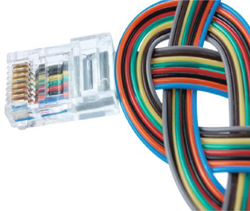While the topic of audio media transport has been (and continues to be) examined extensively, the area of control standards has not been as adequately addressed.
As a result, Open Control Architecture (OCA) is being developed and promoted by the OCA Alliance, a group of nine audio manufacturers working toward the goal of creating an open public standard for control operations of media networking devices.
Previously (here), I discussed the scope and goals of OCA, but there is another question that must be asked: How exactly will this benefit the industry at large, and what advantages could an open public control standard provide to end-users, designers, specifiers and manufacturers.
Different groups have different views of what proprietary control protocols bring to the party. Traditionally, they have provided closed ecosystems of equipment that work well within their specific environment.
However, anybody who has ever had to integrate equipment from different manufacturers or expand existing systems has quickly found the other side of that coin – if a product is not part of “the club,” it’s going to be difficult to get it to play along.
The reality of our industry is that different equipment from different manufacturers is frequently used together to create a complete system, and the components of that system need to operate as a unified entity to get the job done.
Not The Same
One concern about standardizing things like control is that it will result in a homogenization of products from different manufacturers. As mentioned earlier, it’s important to understand that standardizing control is in no way the same as standardizing features or functionality – elements of a product that are unique and exciting will remain that way, but the industry will have a whole host of new options for how they interact with those features.
From the customer’s perspective, this means that a product can be examined and specified on the merits of its performance, features and unique properties, rather than concerns about it being able to function in a given system under a certain set of proprietary rules. Customers can really pick the best tools for the job without dealing with artificial restrictions.
From a manufacturer’s perspective, the same holds true. It is easier for customers to specify and purchase equipment for use in situations or systems where they previously could not. The reality of a manufacturer’s proprietary systems is not that they lock others in; far more often, they lock others out.
Standardization Concerns
There is a whole segment of the professional AV industry that is devoted to solving the problems of getting two or more pieces of equipment to communicate, even though they were never intended to. Whether you’re talking about a systems professional or a manufacturer who makes equipment for this purpose, there is sometimes a concern that standardization of control protocols will damage these businesses. It won’t.
This area of the business is always going to exist, because at the end of the day, customers are not purchasing a pile of random boxes – they are purchasing a solution to a problem. Sometimes the problem is simple, but sometimes it’s very complex and requires special expertise to really deliver a superior experience.
It’s a cold, hard fact, but customers really doesn’t care about the clever script or hack that an integrator came up with to finally get those two pieces of gear to communicate. What they do care about is how many billable hours went into creating that hack, and that when they push button x, function y happens consistently and reliably.
An open public standard for control will allow integrators to become more creative and efficient in how they create solutions, it will add value to their services, and this section of the industry will prosper and thrive.















